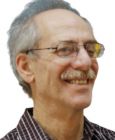Smoking
The Swinging Pendulum of Public Health Advice
Public health advice: Keeping track of what we should do to stay healthy.
Posted August 18, 2024 Reviewed by Tyler Woods
Key points
- It is hard to pin down the best advice on healthy foods.
- Beliefs, no matter how strong they may be today, are not the last words.
- There is a pinch of randomness in the original recipe of the universe, so we cannot know everything.
It is hard to track what we should believe regarding public health recommendations. We were once told that vitamins C and E and beta-carotene antioxidants diminish our chances of heart disease and that eating more fiber prevents colon cancer. We were once told to have a low-roughage diet, and then just a few decades later told to eat plenty of roughage. I recall times when health newsletters told me to limit the number of eggs in my diet. At the same time, it advised having a glass of wine each day because its antioxidants secured a health benefit against colon cancer. Recently, the advice turned to dire warnings about even just one glass of wine.
What is going on?
Those recommendations were based on some smart small-scale observations, while others designed to replicate the studies could not confirm the results. Just because a clinical study involving tens of thousands of subjects in trial and control could not confirm any hypothesis, it does not mean that one event causes another. All it can do is provide a possibility that a hypothesis is correct. At best, it gives circumstantial evidence that one event causes another. Without knowing the cause for sure, we know very little about how to make specific recommendations. Indeed, if the cause is wrong, the recommendations might do more harm than good.
In making recommendations we don’t need to know the causes. All we need is to have some causal associations. For instance, we do know that cigarette smoking has some causal association with lung cancer and cardiovascular diseases, even though we do not know—and may never know—the actual cause. We presume the connection from a coincidental spike in women’s cancer rates during WWII when millions of American women entered the workforce and started smoking for the first time. Millions in Europe were injured and killed in battles, and millions were later saved when warnings surfaced that smoking was a likely cause of lung cancer.
There are often confounding circumstances that make us think that one thing is a cause of another: when A causes B indirectly because A causes C, which happens to cause B. It is complicated. Moreover, nasty hidden variables deceive us. So, we see causes that are either not there or are too hard to find.
Illusory correlations come from how we see and present the data
If we were to naively collect the grades and hair length of students in, say, a math class, it’s possible that we would see a direct correlation between hair length and grades. Those with long hair are likely to get good grades. If we didn’t look at the third variable, we might conclude from that correlation that students should grow their hair to get a good grade in that class. That comes from ignoring a third variable, say, age or gender. Hair length could have been skewed toward the older students who just happened to have longer hair or toward the women who had longer hair than the men.
Hidden variables are ubiquitous in statistical data correlation. Without spotting those variables, we are bound to mistakenly believe all sorts of nonsense, such as to get good college grades one should start smoking because “cigarette smokers make higher college grades than nonsmokers.”
Following advice
If the public listens to health advice coming from clinical studies, we learn something. Suppose we were wrong in accusing cigarette smoking of being the cause of lung cancer and cardiovascular disease. In that case, we should not have seen the dramatic decrease in lung cancer and cardiovascular disease over the last almost six decades, during which the smoking population in the United States dropped by 57%.
Events in nature depend on so many variables that exact measurement is often impossible, and that’s ignoring the stickler of the uncertainty principle. If a simple event, such as the flip of a coin, depends on countless undetectable happenings in a mildly chaotic world of accidentally colliding electrons, just imagine the myriads of happenings responsible for such a complex phenomenon as cancer.
Hold on, now. Discovering the cause of cancer is not the same as having a pretty good guess of what a suspect is. Some scientists attributed the increase in lung cancer in industrialized countries following WWII to occupational factors and new industrial products. Asphalt was suspect, because of the proliferation of road building in America and Europe. However, by the end of 1950, with so many studies linking smoking and lung cancer, it became clear that smoking was a huge factor. The job of statistics is not to find causes but rather to find suspects. Many natural relations that cannot be explained by laws or measured by observations can be linked by statistical measurements that guess causes. Some public health recommendations may be just that: guesses.
References
Marcia Angell and Jerome Kassirer, “Clinical Research— What Should the Public Believe?” New England Journal of Medi- cine 331 (1994), 189–190.
William Paul Vogt and Robert Burke Johnson, Dictionary of Statistics & Methodology: A Nontechnical Guide for the Social Sciences, 4th ed. (Thousand Oaks, CA: SAGE Publications, 2011), 374.


